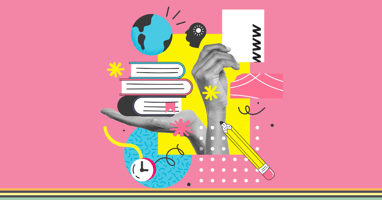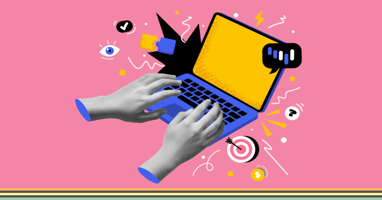Discover the importance of content accessibility in the digital age, following legal action against...
From Neuro-Marketing to Accessibility: My Journey to Making a Positive Impact

Belinda describes her journey from managing a neuro-marketing agency to managing an accessibility company and why she is passionate about accessibility.
Helping others learn, grow and be successful has always been the thing I take the most joy from. I have worked in marketing for a very long time (starting my first marketing business back in 2002) and over the years I have helped many clients market their products and services so they could be seen and heard by those ready to buy.
I have built businesses and helped my team learn and grow over this time too. I think I will always have a passion for people which I have brought to life through neuro-marketing. I often describe neuro-marketing as the science behind human behaviour which starts with my favourite topic to talk about, Archetypes. So, while I still work for a select few clients in this space building their brands strategically with science, I feel I have a bigger calling that brings all of this together.
I found myself at a place in my career (and life) where I want to take all the things I have learnt and use them to make a positive impact on the world, (if only in some small way, to people who I may never know). An impact that is bigger than successful brand strategies and marketing campaigns, to one that changes the way we create content, for the better.
This is my chance to set a whole new standard around how communication should be, to educate and help people make their content accessible to almost everyone. I know, a big task but you can see why I am excited about this work!
But let me back track a little to how I saw the opportunity…it all began when I started TaggedPDF. This was essentially a spin-off of our design and marketing work where we made the finished PDFs of brochures and reports accessible for people with low vision. We added the code (tags) that sat in behind the digital document and enabled a third-party screen reader to accurately communicate the contents of the document out loud to a blind person. All of this work was done in partnership with Vision Australia and has been really meaningful work.
But do you know the fastest growing format of digital communication? Video… and yet most are not accessible to those with hearing loss, low vision or even those with learning challenges or who don’t speak the language the video is produced in. While I was focused on fixing digital documents, there were videos being produced that where not accessible at all.
But imagine how good communication would be for everyone if they were. I get why this hasn’t been the case as the process is time-consuming, clunky and if automated, not very accurate. Most videos as a result haven’t enabled captioning, let alone incorporating audio descriptions.
So, we have created a solution that makes it super easy to create accurate captions on video content and more. Over the last 18 months (probably more) we have been developing software that is at the cutting edge of what technology will allow us to do currently. Using AI and Machine learning we want to help the creators of video content make their movies, lectures, corporate presentations, more accessible and as a result more inclusive.
The key in my mind is to enable content creators to control the whole accessibility process for their videos; and this is what we have created in our online solution we call MeetAandi.
This online tool takes your uploaded video or lecture or how to video, it runs it through some smart technology to automatically create the captions. Depending on your audio quality, it gets it pretty good first pass! You can edit the captions across the video timeline and MeetAandi will remember those changes so it won’t get them wrong next time. Yes, MeetAandi is teachable. Plus, if you make a correction in one place it will make that change throughout the rest of the video.
But best of all, we have made it also super easy to add in audio descriptions and transcripts. These are the details that make your video accessible for everyone. Audio Descriptions explain to someone with low vision what is happening in the video when there is no spoken words. Transcripts are the written out text of the spoken words from the video that someone can use to read and better understand what has been said in the video. Cool hey.
I have a BHAG (big hairy audacious goal) that I am not going to stop until I have achieved. The goal is 1 million minutes of video remediated with captions and audio descriptions. Starting with student lectures I know we can make a massive impact in this area alone.
I am putting my BHAG out there courageously, as I hope you can help me to make the world more inclusive and accessible one video minute at a time.
Please get in touch with me, I would love to help and have you MeetAandi. Click here to reach out or send me an email through this link.





